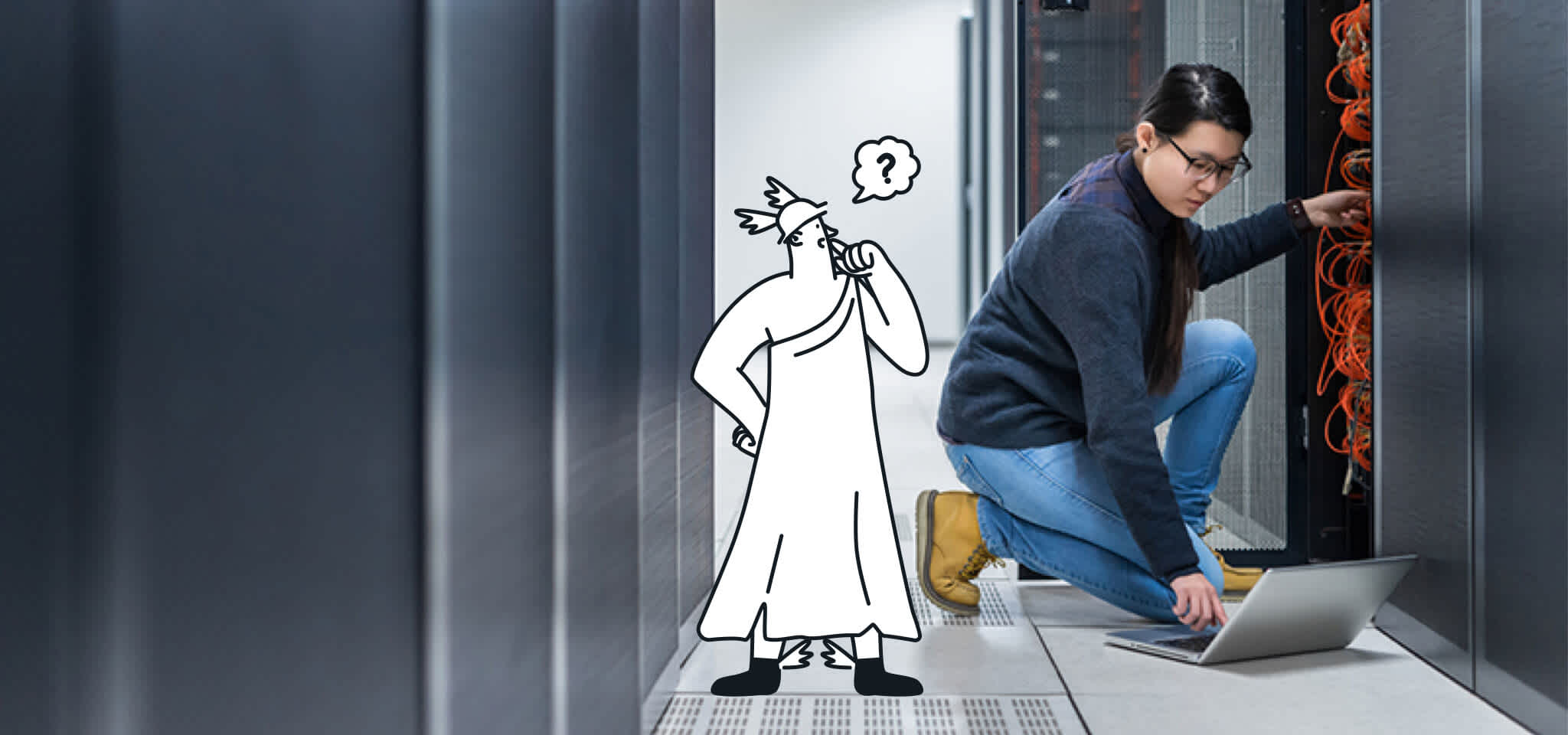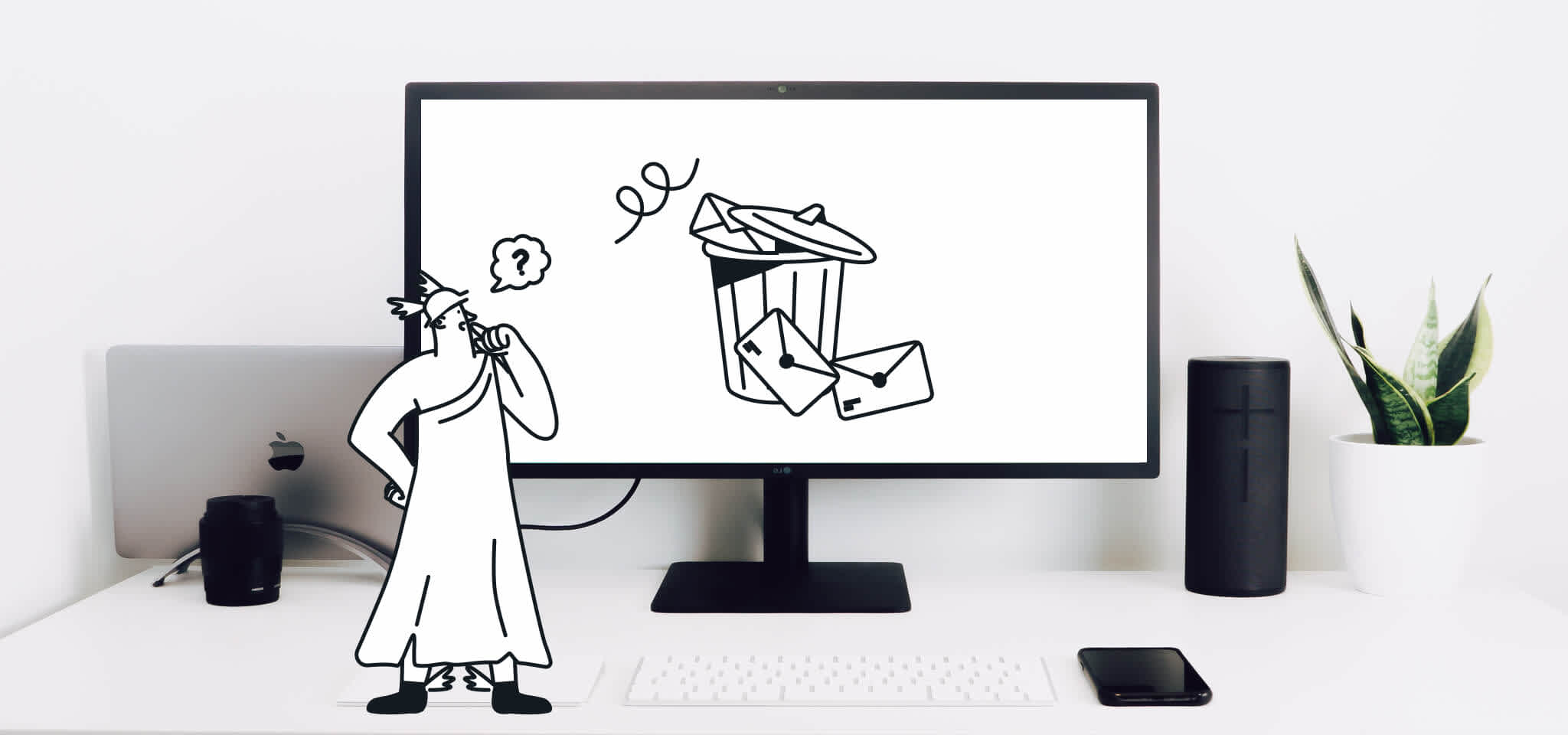Deliverability
What is the return-path email header and why do you need to customize it?
Return-path email is important for tracking bounces and taking care of them. Discover why it is better to customize it and how to do so with Sinch Mailjet.

PUBLISHED ON
Have you ever sent an email that mysteriously vanished into the digital abyss? You hit send, but crickets. No reply, no bounce notification, just...silence. Frustrating, right?
It’s likely, then, that you haven’t got a little-known (but extremely important) part of your email process set-up – the return-path email header. While it might not be the most glamorous area of email marketing, this unsung address plays a crucial role in your overall email deliverability.
We'll delve into the world of return-path addresses, explaining what they are and why customizing them could be a game-changer for your email marketing efforts, improving your sender reputation and keeping your emails landing safely in inboxes.
Table of content
Setting up the CNAME
What is a return-path email header?
A return-path email header, also known as a bounce address, reverse path and 5321-DE, is an SMTP address hidden from the recipient. It acts behind the scenes to handle bounced emails and indicate to SMTP servers where to send them.
Here's how it works:
The return-path address is specified in the email header.
When an email bounces (doesn't reach the recipient's inbox), a notification is sent back to the return-path address.
This notification informs the sender about the delivery failure and the reason for the bounce.
This way, the sender stays informed about email deliverability issues and can take corrective actions, such as cleaning their email list or verifying recipient addresses.
What does a return-path header look like?
For the curious among you, here’s what the return-path looks like (and how to locate it) in a Gmail client.
First, open the burger menu located at the top right of the email you wish to inspect the return-path header, and click on Show original:

Once you’ve clicked through, a new tab will open. You can then use the search bar (CTRL + F) to locate the return-path email header:

Why is a return-path email header important?
The return-path header must be present in all emails to track bounces. If it isn’t, and a bounce occurs, the email servers will be confused and won’t know where to send the notification.
Why is this important? Well, if you’re unaware that an email has bounced you won’t know to remove that address from your sending list. If you don’t know to remove it from your list, you’ll continue to send to that address which can negatively affect your sender score.
If you want to know how improve your email deliverability and chances at landing in the inbox, our sister company, Sinch Mailgun, recently published a research report The states of email deliverability 2023. It’s full of best practices, tips and practical advice on how to keep your emails out of the spam box.
The return-path is also involved in email authentication protocols such as Sender Policy Framework (SPF) and Domain-based Message Authentication, Reporting & Conformance (DMARC). These protocols help email servers verify the legitimacy of the sender's email address, preventing spam and phishing attempts and improving trust and confidence in your brand.
The good news is for Sinch Mailjet customers is that all emails pointing to an address in Mailjet's SMTP environment will have a return-path address with a Mailjet domain. This means that everyone who receives your emails will be able to see the return-path that you use and that you are a Mailjet customer. For some people, this is no problem. However, if you wish you can customize your return path using a CNAME record.
Why should you customize your return-path?
The reason for customizing your return-path has to do with email authentication processes, or how the recipient’s server determines which emails to let through and which ones it rejects.
DMARC is an email validation system created to detect and prevent phishing. One of the many tasks the DMARC system performs is to check the concordance between the sender's name and your return-path name.
With the increase in phishing attacks, ISPs have been trying to protect their reputation. Even trusted email providers are subjected to exhaustive controls.
There are many factors that can cause problems with deliverability, but one of them has an easy solution: clean up your email header and customize your return path. Each server has a different way of interpreting email headers to establish authenticity, but the more systematic the signals in your messages, the better.
It makes sense that the DE address and the return-path address have the same domain, doesn't it? Many servers will reject an email claiming to come from a certain address if the message is not sent by a server that usually manages that address.
With Mailjet you can customize the return path to ensure that no one gets your reputation compromised through a CNAME record. To understand how it works, we must first see what CNAME is.
It is important to know that there should only be one return-path header. In the case there are more, this would indicate that something is wrong with the SMTP configuration and you need to dig deeper to check it.
What is CNAME?
CNAME is the abbreviation for Canonical Name. CNAME records can be used as an alias for a name. Any system hosting a site must have an IP address in order to be connected to the World Wide Web. The DNS resolves the name of your site to its IP address, although sometimes several names resolve it in the same IP address, and this is where the CNAME is useful.
For example, if you own mydomain.com and www.mydomain.com that points to the same site or application and are hosted on the same server, it would be very useful to create the following to avoid keeping two different records:
An A record for mydomain.com pointing to the server IP address;
A CNAME record for www.mydomain.com pointing to mydomain.com;
Then you will have mydomain.com, which points to the IP address of the server, and www.mydomain.com points to the same IP address of the server (mydomain.com). If it is necessary to modify the IP address, you only need to update it in one place since it will be replicated in the other.
However, the CNAME has some restrictions.
You should always point to another domain name and never directly to an IP address.
It cannot coexist with another record for the same name. You cannot have a CNAME and TXT record for www.midominio.com.
You can point to another CNAME record, although generally this setting is not recommended for performance reasons. If applicable, the CNAME record should aim as much as possible at the target name to avoid unnecessary performance demands.
You cannot put a CNAME record at the root domain level because the root domain is the Start Of Authority (SOA) of the DNS that must point to an IP address.
MX and NS records should never point to a CNAME alias.
A surprising novelty is that with the latest generation of DNS technology, the same CNAME record will be able to redirect to one of several names based on dynamic parameters. This will make it even easier to manage CNAME records.
A and CNAME records are sometimes confused, but they are two different and common ways of assigning a hostname to one or more IP addresses. There are important differences between these two records that need to be taken into account. Record A points to a specific IP (you want mydomain.com to point to server 189.1.147.13) and the CNAME record to point to another name instead of an IP (www.midominio.com points to mydomain.com).
Think of the CNAME record as an alias for the destination name that inherits its entire resolution string.
Some common uses of CNAME records are:
Provide a separate hostname for specific network services. Common examples are email or FTP that points that hostname to the root domain.
Many people use subdomains to manage their different services or clients linked to the primary domain (for example, company.namehost.com), and CNAME record to point to the client's domain (www.empresa.com).
Register the same domain in several countries and have the country versions point to the main domain ".com".
Point from several websites owned by the same organization to the main website.
How you can customize your return-path
Now that we know more about the CNAME record, let's see how you need to configure it to be able to customize your return-path with Mailjet. We'll use the first of the common examples: you use a CNAME record to have your own domain point to our domain in the return-path address.
The default return-path Mailjet uses is "bnc3.mailjet.com." Since we must receive the bounce events, you cannot change it completely, because if you do we will not be able to receive the events.
Setting up the CNAME
To customize your return-path, you'll need to do three simple steps: create a subdomain, create the CNAME record in your DNS zone, and contact us to activate the redirection.
Step 1
Create a subdomain in your main domain using the prefix "bnc3." For example, with a main domain mydomain.com, you will have to create a subdomain bnc3.mydomain.com.
Step 2
You must access your DNS zone and create a CNAME record that looks like this:
bnc3.mydomain.com. IN CNAME bnc3.mailjet.com.
This will mean that your domain bnc3.mydomain.com will now point to bnc3.mailjet.com. Therefore, everyone will see bnc3.midominio.com in the email header, but it will actually point to our bnc3.mailjet.com and we will continue to receive bounce events and update your statistics.
Step 3
The final step would be to get in touch with us. To do this, you can open a ticket with our support team and provide us with the following information so that we can activate your personalized return route:
The API key you want to activate the return-path.
The CNAME record you configured: the screenshot or text version of the record will be perfect.
Please note that you can only have one active return-path per API key.
Once we have this information, we will do the necessary and our agents will get back to you with the good news that everything is ready. And there you go - you have your customized return-path.
Improve your deliverability with Sinch Mailjet
Email deliverability is extremely important to every sender wishing to stay clear of their subscribers’ inbox, and setting up the return-path email header is a critical step in that process.
Whether you’re sending marketing or transactional emails, our enterprise deliverability services can help you shape and maximize the success of your email strategy.
Related readings
Popular posts

Top email marketing trends for 2022
To the outsiders, it can sometimes feel like email hasn't changed that much since it was created. Maybe this is why some are so persistent in...
Read more

Reducing email’s carbon footprint
When it comes to protecting our planet, every step toward cleaner practices – small and big – counts. So, what if we told you that emailing, as clean and green as it seems...
Read more

Marketing calendar 2024: Dates you shouldn’t miss this year
We finally got through 2023 (phew!) and Q1 is just around the corner. It’s time for you to start scribbling down your New Year’s Resolutions to make sure we start the year with a bang. If you’ve found your way here, we’re guessing that’s because creating a winning...
Read more



